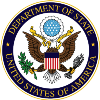A Global Mission that Defines the Leading Edge of Technology
by: Wayne Ashbery, Deputy Assistant Secretary for Countermeasures Bureau of Diplomatic Security (DS) at the U.S. Department of State.
A certain amount of secrecy shrouds the technology deployed at American embassies and consulates around the globe. And for good reason; we do not want those who wish to do us harm to know how we thwart their attacks. So it is not common knowledge that the State Department’s Bureau of Diplomatic Security (DS) deploys some of the most sophisticated technical security countermeasures in the world.
Diplomatic Security is often a catalyst for technology evolution in carrying out our mission to protect U.S. personnel, facilities, and information, stateside and overseas. The reason for that is threefold: we deploy globally, we face ever-changing threats, and the scope of our work is vast.
The State Department is one of the few organizations that operate all over the world, so DS needs to employ modern technologies at 750 overseas and 140 domestic facilities –- some of them in less than modern environments. We are not only deploying but interconnecting technology in places with underdeveloped infrastructure, intermittent electrical service, and minimal bandwidth. That requires designing around the absence of what is normally considered the essential framework for technology.
Extreme weather is another challenge. It is essential that our equipment work reliably in vastly different climates all over the world — in arctic temperatures; in the middle of the desert with shifting sand; or in the tropics along seashores where salt water becomes highly corrosive. This is why we have one of the most stringent vetting processes for evaluating equipment in the federal government.
As the U.S. military draws down operations, the State Department remains open in some of the most unstable regions in the world. The threats we face in those regions continue to evolve as our enemy advances in its use of technology. This drives our vigilance in rolling out technical solutions that accurately address the continually changing nature of global threat, and why we persist in maintaining a forward-thinking perspective that takes into consideration every possible scenario.
Deploying new technology is not an instant process. To do it correctly requires a tremendous amount of due diligence and planning. We do our utmost to make sure we are selecting the best possible solution for our money. Purely custom technology is not always reliable and always expensive. Only when a commercial off-the-shelf solution is not available will we use a hybrid of commercial technology that has been tailored to our specific requirements. A great deal of engineering ingenuity goes into that process.
In terms of the breadth and depth of our work, the State Department invests more than $400 million, annually, in physical, technical, and cyber security systems. We leverage advanced electrical, computer, and wireless technologies, as well as mechanical, civil, and structural technologies. The variety of systems we are responsible for ranges from anti-ram vehicle barriers to forward-looking infrared cameras, and from armored vehicles to biometric access control. Lifecycle support for all these systems is a massive undertaking. Carrying out this vast and complex mission requires a right mix of talented engineers, technicians, U.S. Navy Seabees, civil servants, and contractors.
What is not secret about DS’s technology program is the incredibly talented team that works in every corner of the world to meet an amazingly diverse mission set. They continually amaze in terms of their capability, willingness, and desire to commit to an altruistic mission of protecting our people, property, and sensitive information around the world.
Editor’s Note: The Bureau of Diplomatic Security is again spearheading the State Department’s participation in the upcoming USA Science and Engineering Festival at the Washington Convention Center, April 16–17, 2016. This will be a rare opportunity for the general public to get an inside view of technology throughout the Department and what goes on behind the walls of our embassies.
This blog was originally published on the State Department’s DipNote Blog.
